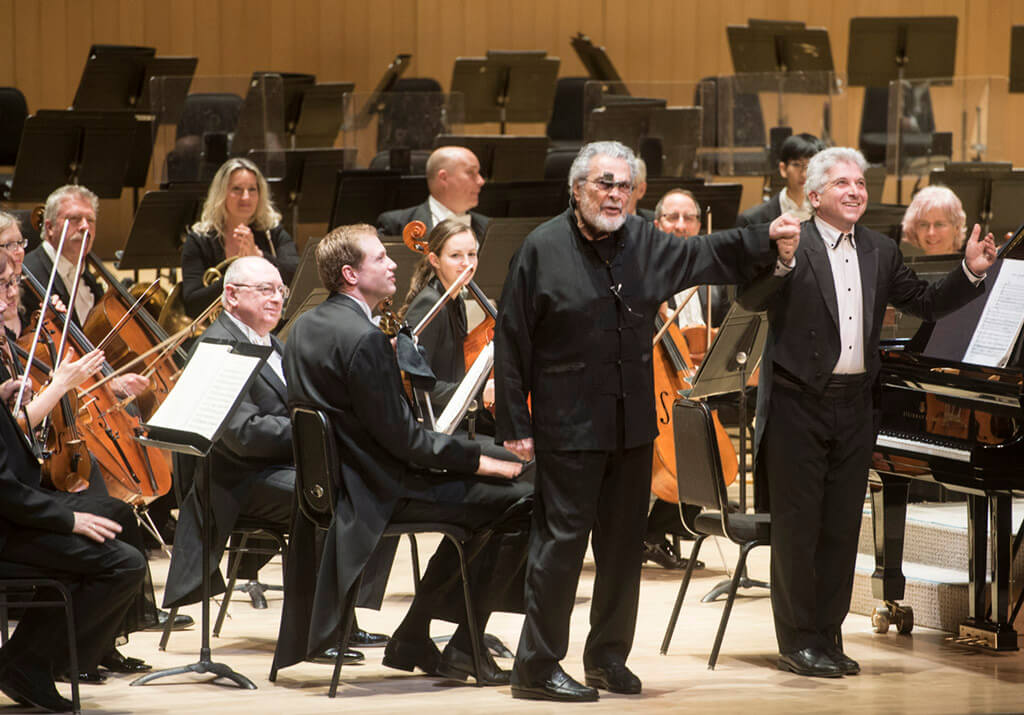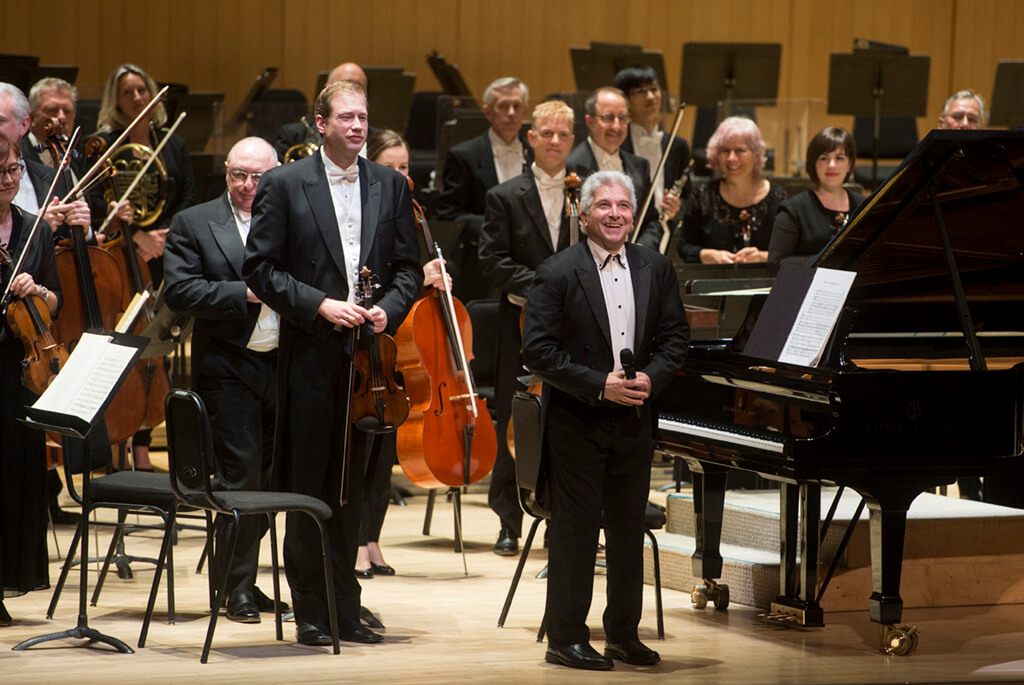
Toronto Symphony Orchestra, with Leon Fleisher (soloist) Peter Oundjian (conductor). At Roy Thomson Hall, Wednesday.
False pretences might be putting the case too strongly, but when the Toronto Symphony Orchestra (TSO) last year announced the performance of a “new edition” of Bruckner’s Eighth Symphony, we had every reason to expect a fresh take on the revised version of the score, possibly something that diverged from (or reconciled) the rival Haas and Nowak editions, which are still a source of fisticuffs.
Only when I got my hands on the TSO program notes did I understand that the “new edition” was of the original 1887 version, which is certainly an object of interest, but not a score as riddled with cruxes as its successor.
Well, arrive grumpy, leave on a cloud: This Himalayan peak of a symphony has a way of inspiring awe in any edition if it is performed with clarity, discipline and lustre. Funny. Now that he is about to leave the TSO, Peter Oundjian has become a certified Brucknerian.
Some nerdy background: The original 1887 Eighth has long been available in an edition by the same Leopold Nowak who oversaw the International Bruckner Society issue of the 1890 revision. Toronto-born Yale scholar Paul Hawkshaw has made adjustments to bowings, accents, dynamic markings and other details based on Bruckner’s 1887 autograph, to which Nowak (1904-1991) apparently did not have access. To judge from what I heard Wednesday in Roy Thomson Hall — and what Professor Hawkshaw himself writes in the program note — the new edition does not differ substantially from Nowak’s.
However, the 1887 Eighth does differ from the 1890 revision, in which Bruckner substituted a grim-reaper pianissimo ending to the first movement for a fortissimo blaze (or rather, as we discovered, extended the ghostly string music that precedes the blast of brass). His tinkering with the Scherzo was for the better, and the reworked Adagio (with or without the Robert Haas restorations of 1939) creates a more convincing feeling of harmonic excursion and return (while dispensing with unnecessary cymbal crashes). Bruckner shortened his finale and made the famous concluding tapestry of four themes more concentrated. My preference is for 1890 in either the Haas or Nowak editions.

None of which is to say that the 1887 is not magnificent. Oundjian had obviously looked closely at the score and recognized its depths. Tempos were on the quick side (84 minutes is economical for an 1887 Eighth) but phrases followed phrases with compelling romantic logic. The TSO strings in the Adagio could whisper with the best of them. By striving for lucidity rather than monumental force, the brass seemed part of the community rather than barbarian invaders. Woodwinds sang sweetly. I am not in general a fan of split violins and stage-right double basses, but the soundscape from my seat was detailed and balanced.
A Mozart piano concerto is a popular complement for a Bruckner symphony. On this occasion, we heard No. 12 in A Major K. 414 in a miraculously clear and nonsense-free performance by 89-year-old Leon Fleisher. This American pianist has a soft touch, having recovered from a case of focal dystopia in his right hand. Somehow the restraint was a positive thing, especially in the solo recapitulation of the Andante, where Fleisher all but stopped time with his probing style.
Collaboration with Oundjian and the orchestra was admirable. A few smudges amounted to nothing. Wearing eyeglasses, Fleisher read from the score, and why not? More than 60 years after his TSO debut, he still finds wonders in it.
A footnote on footnotes: The TSO program styled the Bruckner as a “Canadian premiere.” It was the first Canadian performance to use the Hawkshaw edition, but certainly not the Canadian premiere of the 1887 version. Georg Tintner gave the North American premiere in 1982 in a tour of performances by the National Youth Orchestra that included Massey Hall. There is even a recording to prove it.
- SCRUTINY | Moussa Concerto Sounds Strong In Toronto Symphony Orchestra Premiere, Paired With Playful Don Quixote - April 4, 2024
- SCRUTINY | Esprit Orchestra At Koerner Hall: Ligeti 2, Richter No Score - April 1, 2024
- SCRUTINY | Sibelius & New Cello Concerto By Detlev Glanert Offers A Mixed Bag From The TSO - March 28, 2024



